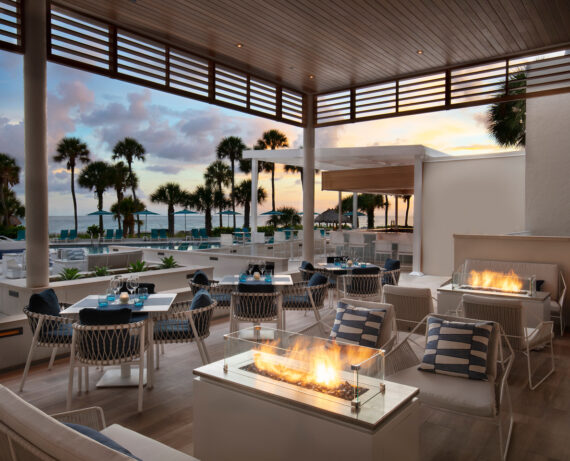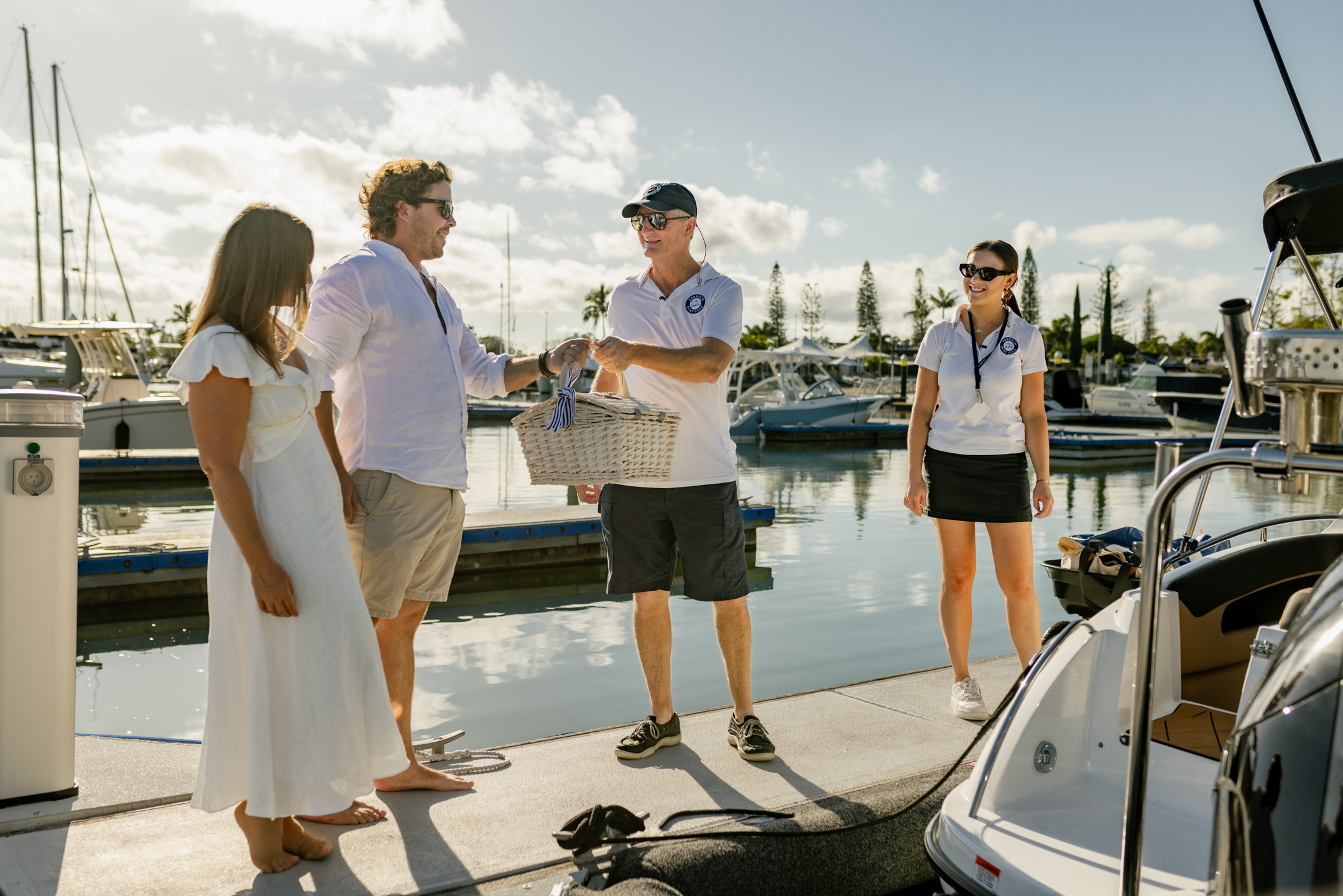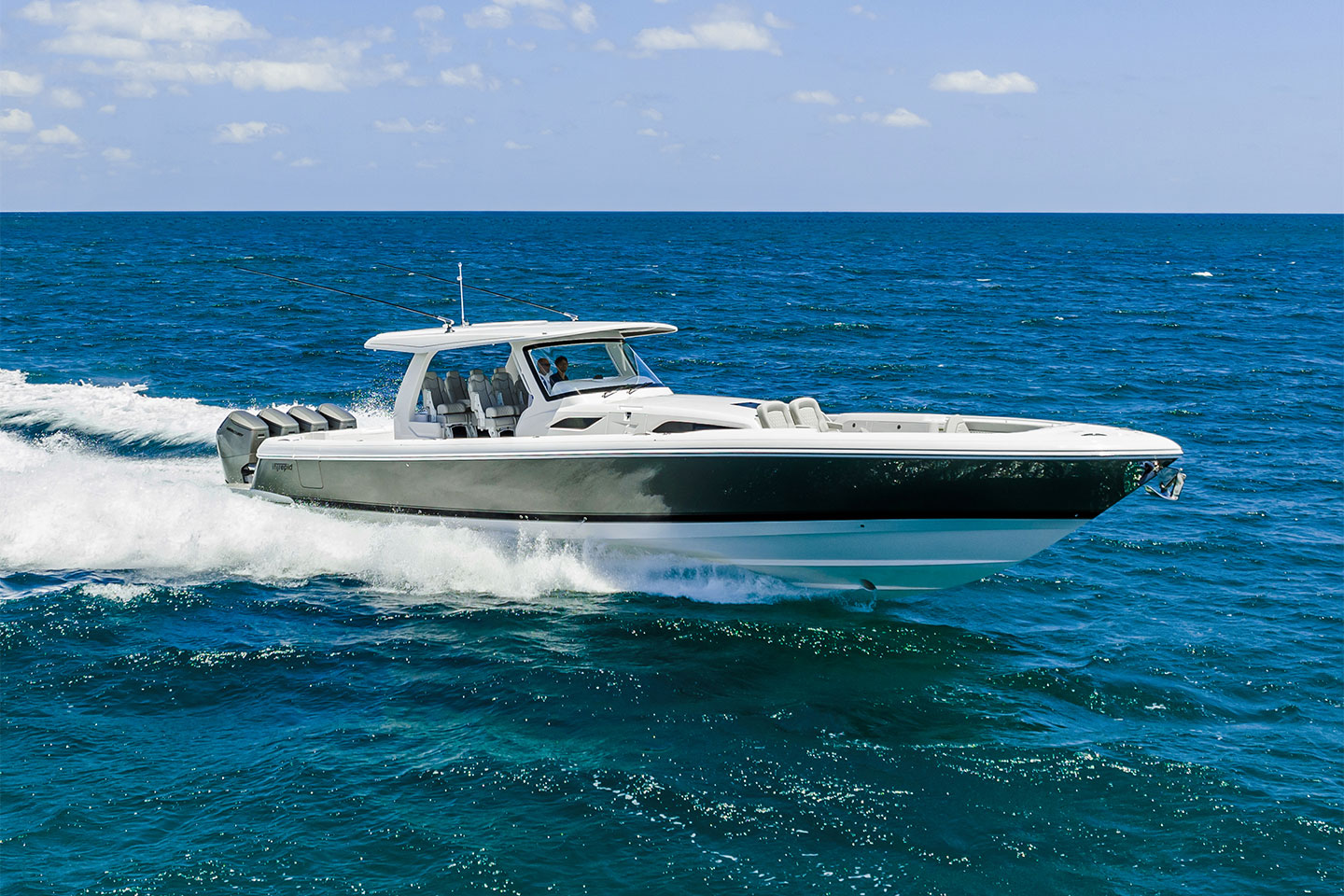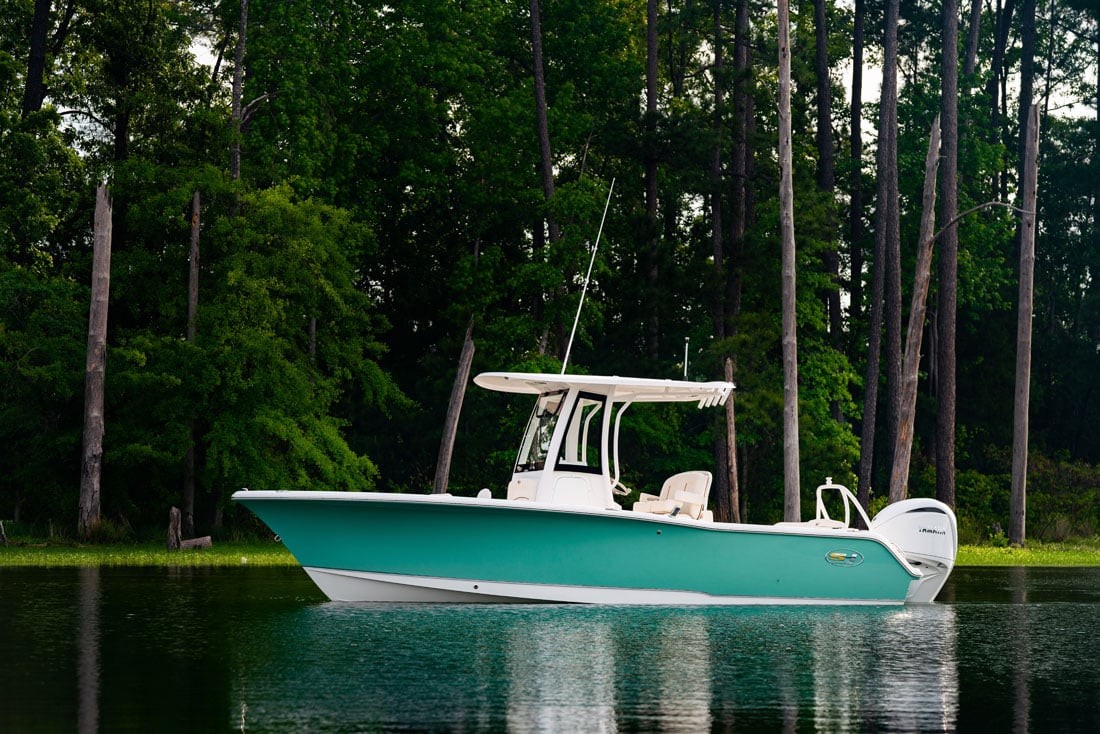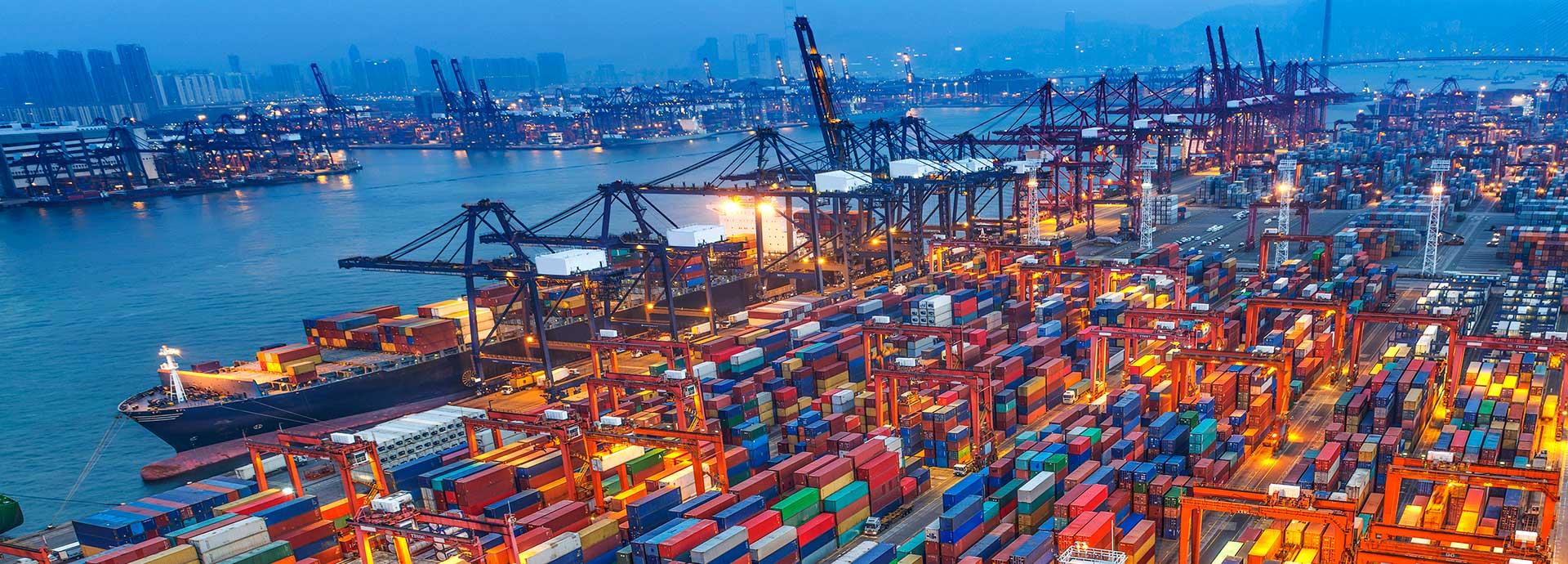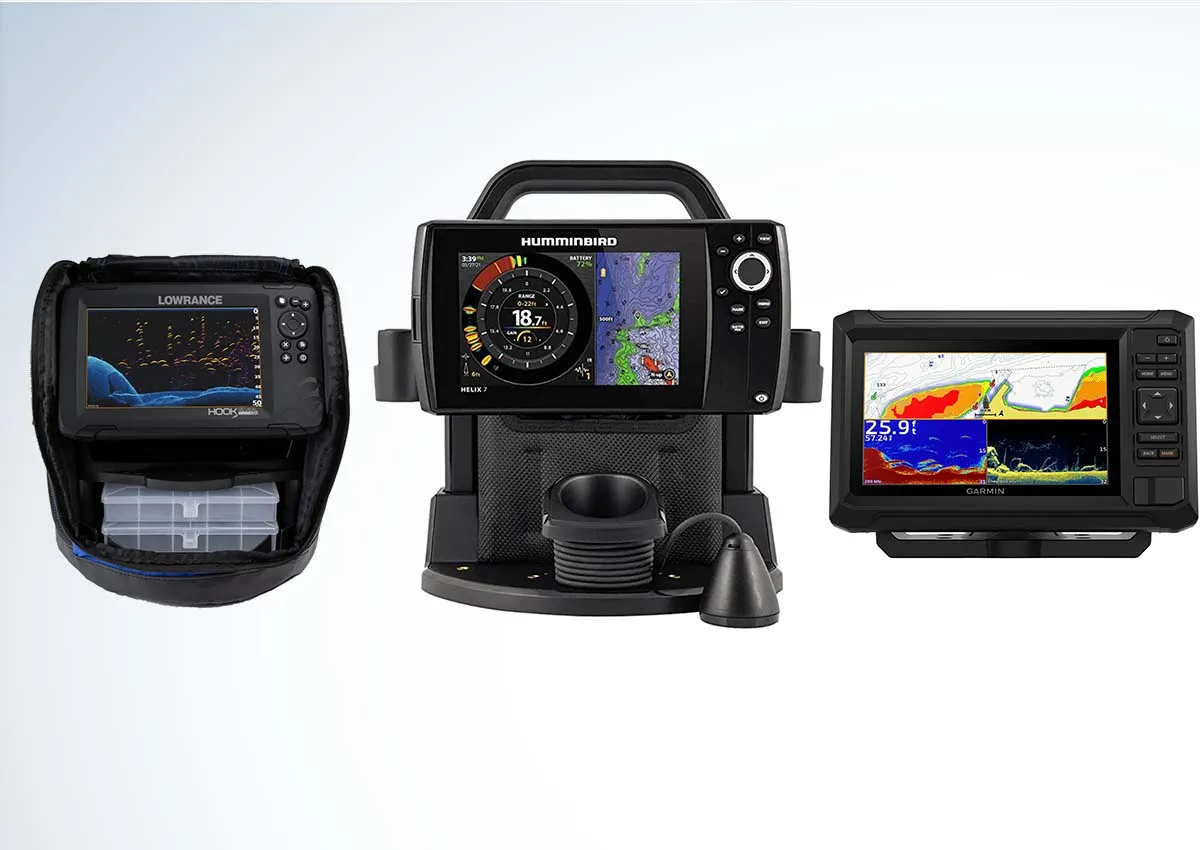What Do Manatees Eat: A Comprehensive Guide on Their Diet
Manatees, gentle and slow-moving aquatic mammals, are found along tropical and subtropical Atlantic coasts and in various inland waters. These fascinating creatures have a diet that consists mainly of plants, including seagrasses, algae, and other aquatic vegetation. As herbivores, they forage for food for about seven hours a day, consuming an impressive 7-15% of their body weight.
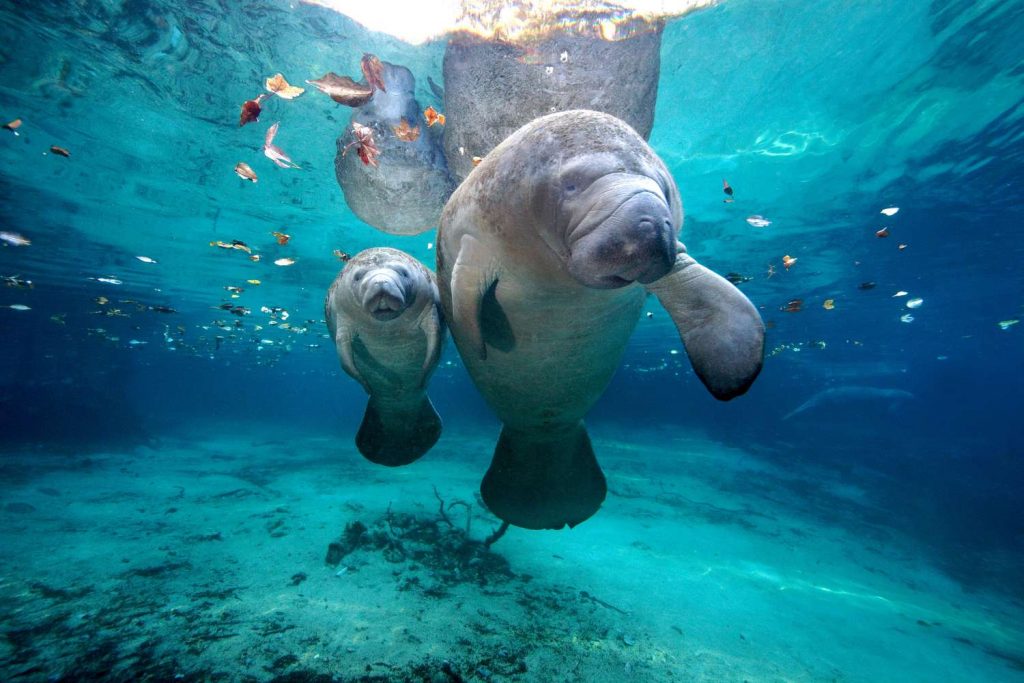
Living in both freshwater and saltwater environments, manatees have adapted to eating a wide variety of plants depending on their location. For example, Florida manatees are known to feed on turtle grass, manatee grass, and shoal grass, while the West African manatees in Sierra Leone have been found consuming rice in nearby fields. This ability to adapt their diet based on their surroundings is one of the reasons manatees have thrived in various habitats across a broad geographic range.
Key Takeaways
- Manatees are herbivores that consume mainly aquatic plants, such as seagrasses and algae.
- Their diet varies based on their surroundings and the availability of vegetation in both saltwater and freshwater environments.
- Manatees have adapted and thrived in different habitats due to their ability to feed on a wide variety of plants.

Dietary Needs of Manatees
Manatees are primarily herbivorous marine mammals, meaning they mainly consume plant-based diets. These gentle creatures feed on a wide variety of submerged, emergent, floating, and shoreline vegetation. Their food intake is diverse, as their habitats usually boast an array of plant species to support their nutritional requirements.
Manatees' powerful, prehensile upper-lips are specially adapted for the efficient gathering and consumption of vegetation. They play a crucial role in grasping, breaking, and uprooting the plants these mammals feed on ¹. Some common plant species found in a manatee's diet include turtle grass, manatee grass, shoal grass, mangrove leaves, various algae, water hyacinth, acorns, and hydrilla.
Although predominantly herbivores, manatees have also been known to consume small amounts of animal-based foods. They sometimes feed on small fish, crustaceans, and mollusks while grazing on seagrass beds ².
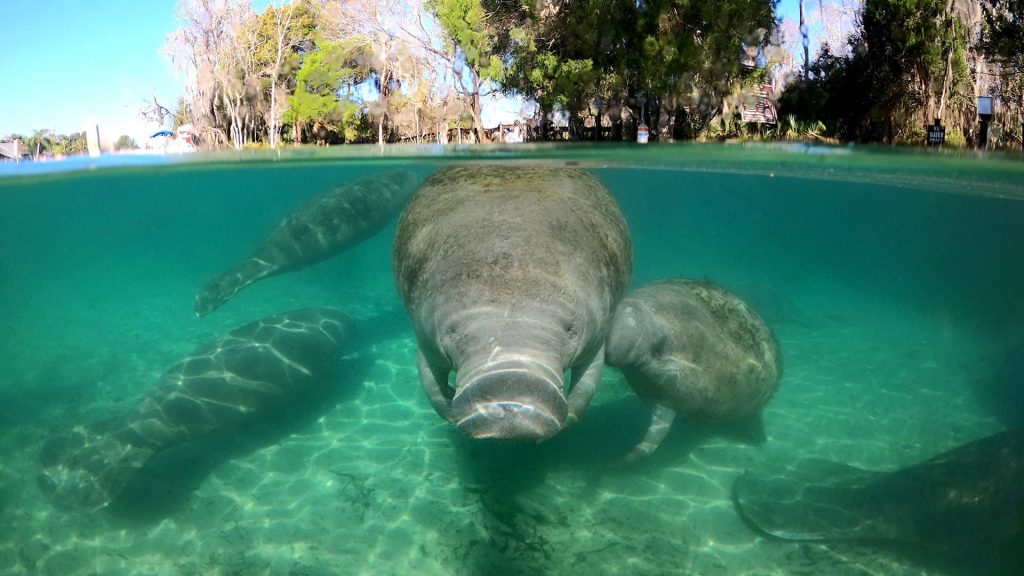
Due to their relatively low metabolic rate, manatees need to consume a significant amount of food daily. On average, a manatee ingests about 10% of its body weight in plant matter every day ³. That means a 1,000-pound manatee would require 100 pounds of food daily to sustain its energy levels and support its body functions.
Manatees exhibit a preference for specific plants based on their habitat and environment. For instance, Florida manatees will typically feed on more than 60 species of plants. In the waters of the Amazon and Niger rivers, the diet of manatees might vary significantly. Interestingly, the rostrum of each species of manatee is positioned to take advantage of the location of their preferred plants in the water column ⁴.
In conclusion, manatees have quite diverse dietary needs, primarily relying on their herbivorous nature and adaptability within their habitats. Their unique anatomical and physiological features, such as their prehensile upper-lips and metabolic rate, play significant roles in meeting their nutritional requirements.
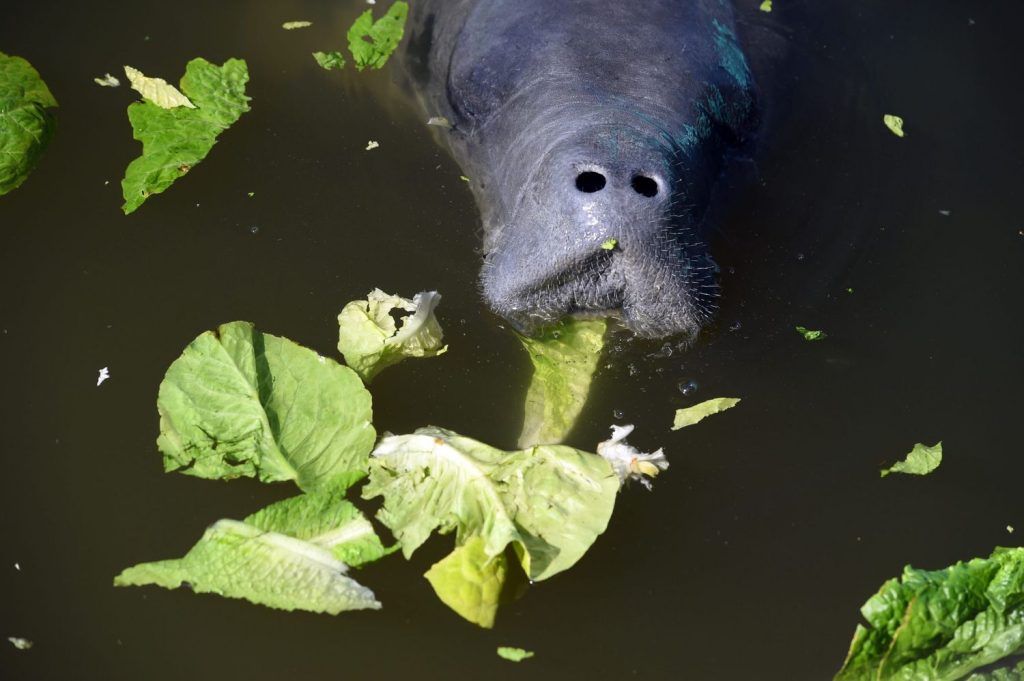
Variety of Foods Consumed
Shoal and Widgeon Grass
Manatees are known for their unique and flexible eating habits, as they consume a wide variety of aquatic plants and marine vegetation. In particular, they are partial to shoal grass and widgeon grass, which are often found in shallow coastal waters. These marine mammals use their flexible lips, molars, and snout to efficiently forage the seafloor, grazing on these nutritious grasses. Their front flippers also aid in the feeding process, enabling manatees to uproot and grab onto the underwater plants with ease.
Additional Aquatic Plants and Algae
Apart from shoal grass and widgeon grass, manatees also feed on other types of aquatic plants. For example, they have been observed consuming water lettuce, water celery, alligator weed, hydrilla, water hyacinth, and pickerelweed 1. Additionally, manatees have a penchant for various algae, such as marine algae, shoreline algae, and different species of filamentous algae. These versatile marine mammals are not limited just to aquatic plants, as they have also been seen feasting on fallen fruits like acorns and water-dependent fruits, like melons, grapes, and oranges 2.
Seagrasses and Other Marine Vegetation
Manatees also rely heavily on seagrasses as a staple in their diet. Key species of seagrasses that make up their diet include manatee grass, turtle grass, and sea clover. Seagrasses not only provide essential nutrients but also serve as a crucial habitat for many other marine species. In addition to seagrasses, manatees feed on a variety of other marine vegetation, such as musk grass and various types of marine algae. Their ability to consume both freshwater and saltwater plants enables them to adapt to different environments and maintain a diverse and fulfilling diet 3.
As herbivorous marine mammals, manatees exhibit a heavy reliance on various aquatic plants, marine vegetation, and algae for their sustenance. Throughout the day, they forage and graze extensively to maintain their energy levels and nourish their large bodies. Their unique adaptations, such as flexible lips, sharp molars, and front flippers, further enable them to efficiently consume these underwater plants, ensuring a well-rounded and nutrient-rich diet.
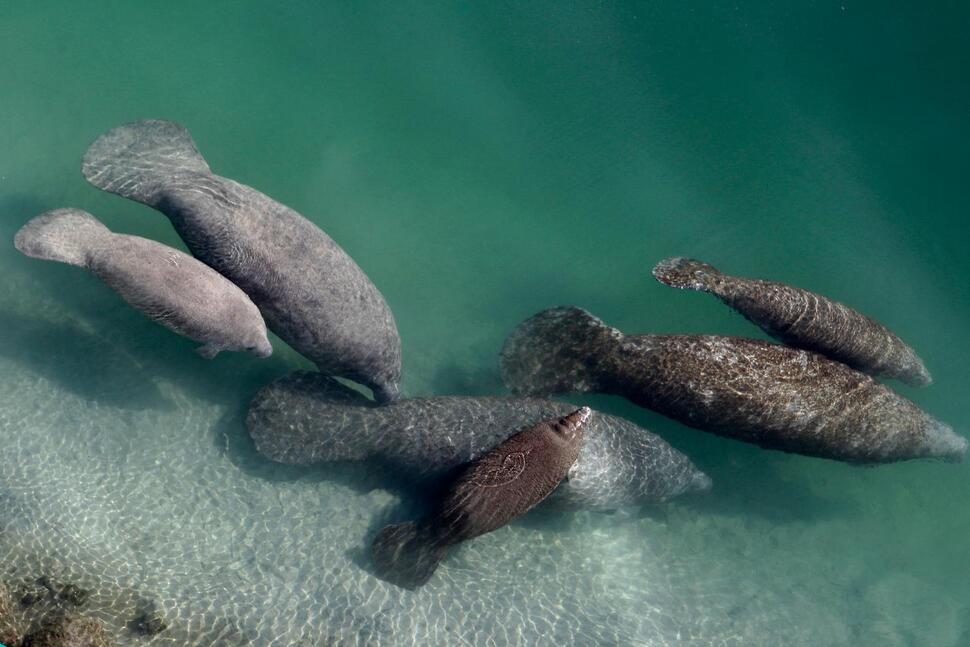
Manatees in the Fresh and Salt Water
Manatees are unique marine mammals that inhabit both fresh and saltwater environments. They primarily feed on aquatic plants, consuming both freshwater and saltwater varieties of vegetation. Their prehensile lips and specialized sensory bristles help them navigate and manipulate their food sources.
In fresh water habitats, manatees are commonly found in river basins and river mouths. They consume a variety of freshwater plants such as water lilies, alligator weed, and duckweed. Apart from plants, manatees also have a taste for crustaceans occasionally, adding diversity to their diet.
Manatees living in saltwater environments, such as coastal waters, also have access to sea grasses and other aquatic plants. Their diet in these habitats is slightly different but still primarily plant-based. It is important to note that manatees need to drink fresh water and can go without it for extended periods, usually returning to fresh water sources every one to two weeks.
Manatees are well-adapted to both freshwater and saltwater ecosystems. They can easily transition between the two environments to meet their nutritional needs and access fresh water sources for hydration. Their ability to consume a wide variety of plant species and occasional crustaceans contributes to their resilience and adaptability in the diverse aquatic habitats they inhabit.
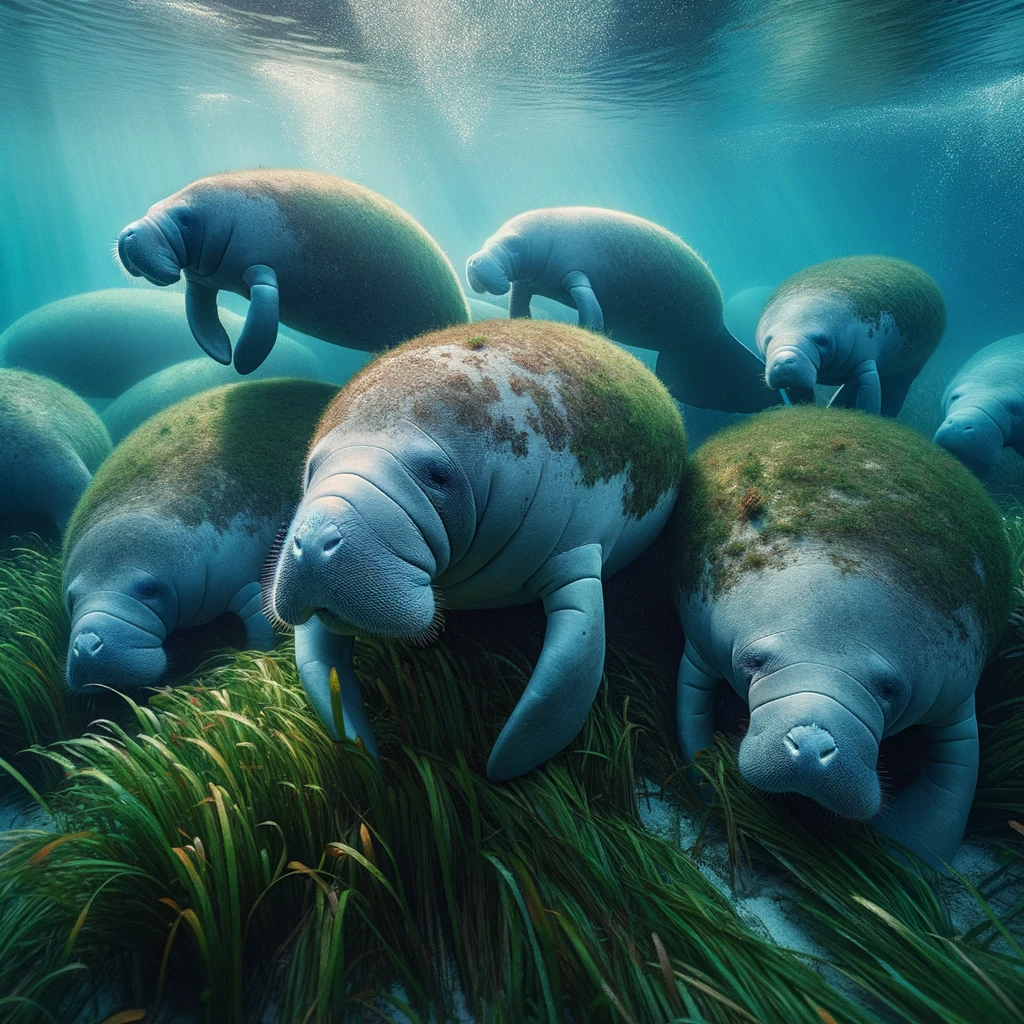
Geographical Dietary Differences
Florida and West Indian Manatees
Florida and West Indian manatees are known to feed on various types of seagrasses and other shoreline vegetation. They consume plants like turtle grass, manatee grass, shoal grass, mangrove leaves, and various types of algae found in the Florida waters. These gentle marine mammals forage for about 7 hours a day, eating 7-15% of their body weight, which amounts to roughly 150 pounds of food daily for an average 1,000-pound manatee source. They can feed on both freshwater and saltwater plants, grazing on plants found at the surface, along the bottom, and in the water column.
Amazonian On the Flip Side
Amazonian manatees, endemic to the Amazon Basin, exhibit different dietary habits compared to their Floridian and West Indian counterparts. These manatees primarily feed on aquatic plants in the surface and bottom of their habitat. During dry seasons (November and December), water levels in the Amazon Basin drop as much as 9 to 15 meters (30-50 ft.), eliminating their access to the plants source. As a result, they may fast during these months while living in deep bodies of water. However, when water levels permit, they are known to consume overhanging branches and fruits that have fallen into the water, such as melons, grapes, and oranges source.
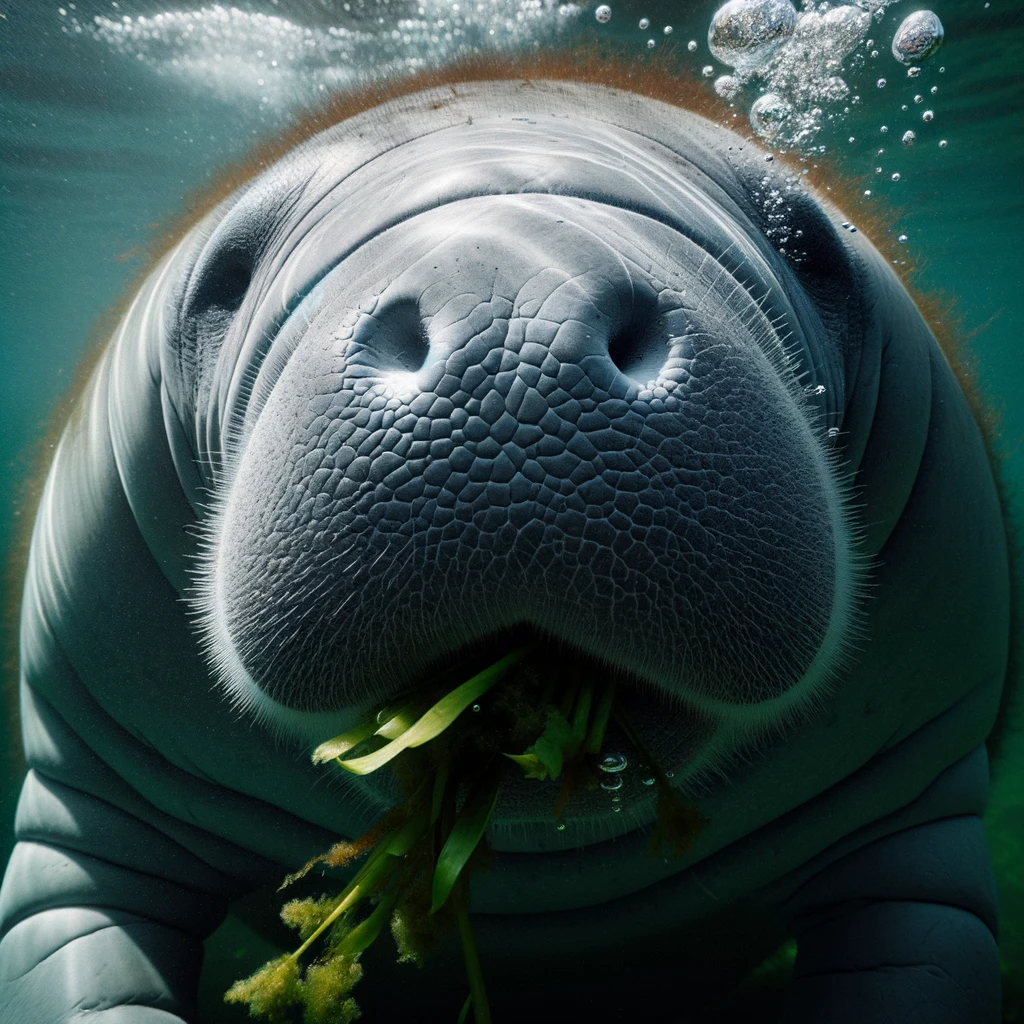
West African Manatees
West African manatees, found along the West African coastline, also have distinct dietary preferences. While they consume similar aquatic plants as their counterparts in Florida and the Amazon Basin, they have been observed eating a wider variety of plants due to the diverse aquatic environments found in their range. They graze on shoreline vegetation and may also consume overhanging branches, just like the Amazonian species. Their feeding habits involve roaming through the water column, grazing on surface plants and foraging for food along the bottom of the water. Moreover, in addition to aquatic plants, they have been known to feed on fallen fruits and decaying wood source.
Each of these manatee species has developed unique dietary habits to adapt to specific geographical regions and environmental conditions, emphasizing the importance of understanding their differences in order to ensure the conservation and well-being of these gentle creatures.
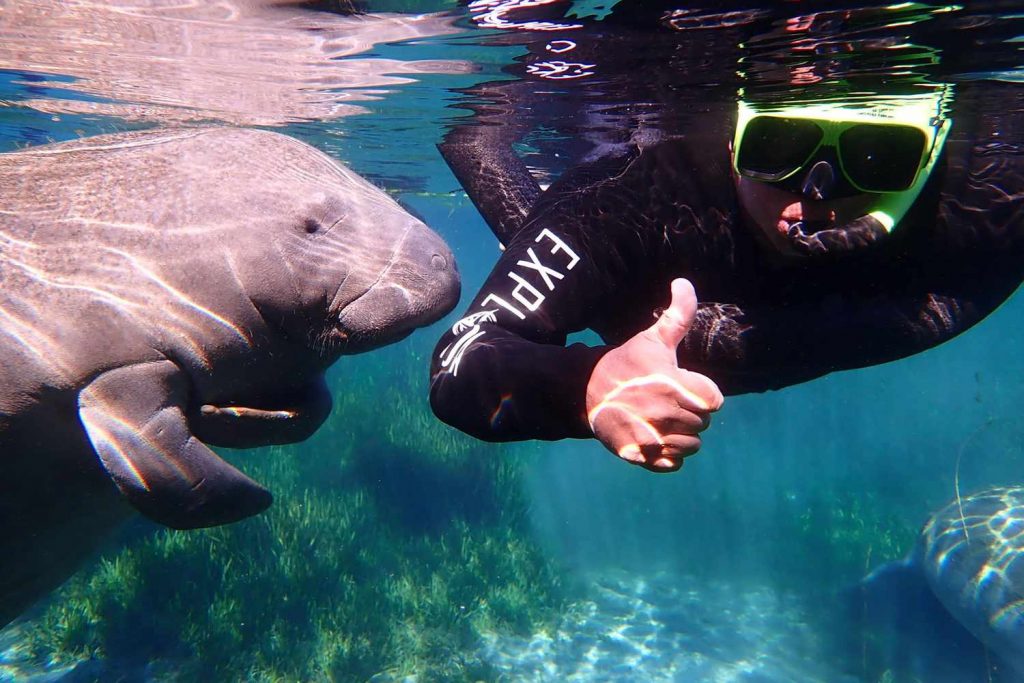
Manatees and Human Interaction
Manatees are gentle herbivorous marine mammals that feed primarily on aquatic and freshwater plants. However, human interaction can have an impact on their diet and overall well-being. In recent years, manatees have been observed seeking food from humans and even approaching boats and docks.
Some manatees have developed a habit of eating atypical items such as clams and vegetation found near sewage outfalls. They may also come into contact with culverts and other structures associated with human activity, which can pose risks for their health and safety. For example, polluted water can affect the quality and availability of food sources for manatees and lead to the consumption of toxic substances.
Besides the direct impact of human-induced pollution, boat strikes are another significant threat to manatees. As these mammals often inhabit shallow waters near shorelines, they are vulnerable to boat propellers and vessel collisions. Manatees may be injured or killed in boat strikes, causing a decline in their population.

Human activities near marinas and boating areas may also disrupt manatees' natural feeding habits. For instance, the use of hoses by boat owners may attract manatees, leading to a concerning situation where they seek out human interaction for nourishment.
Given the various factors affecting manatees and their diets, conservation efforts and proper waste disposal protocols are crucial to ensure the preservation and well-being of these gentle creatures. Educating the public about manatees and implementing protective measures, such as designated safe zones and boating regulations, will help reduce the negative impact of human interaction on their diet and population.
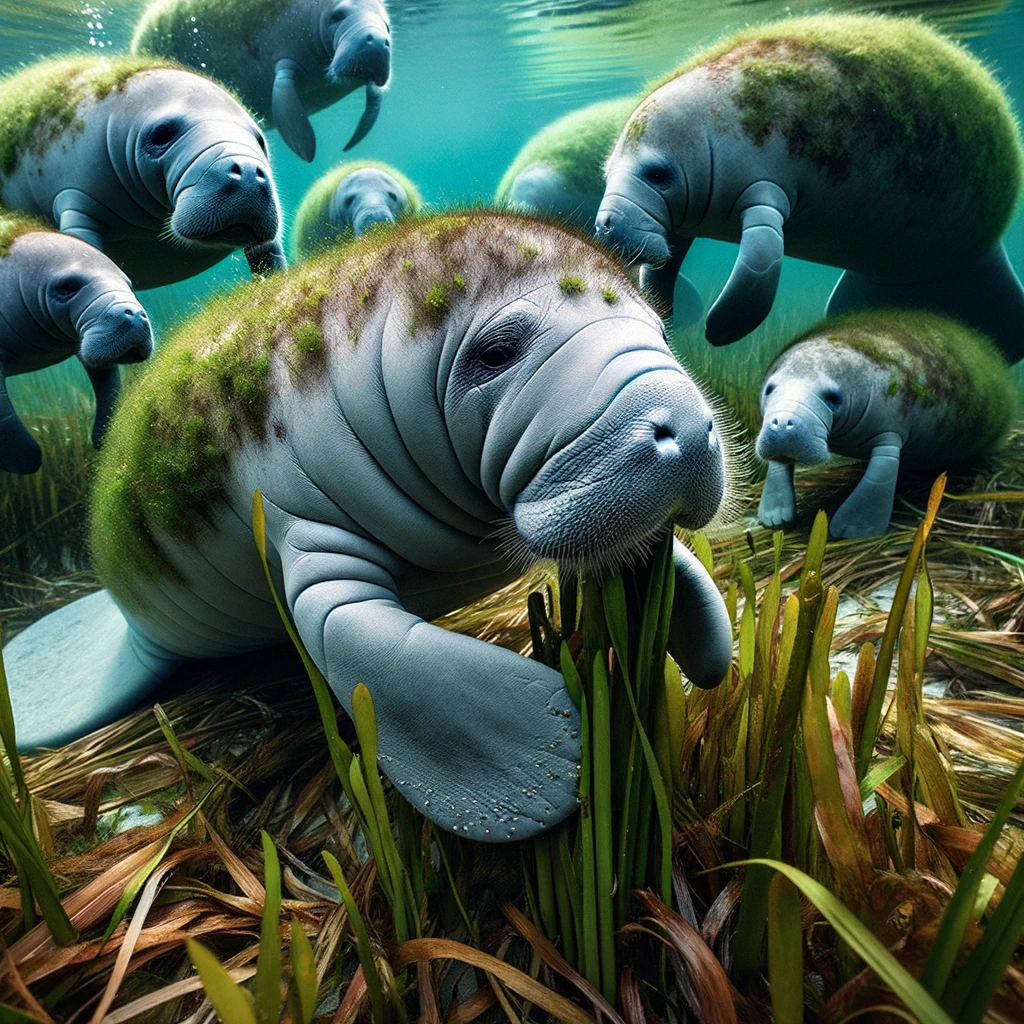
The Adaptation of Manatees
Manatees, also known as sea cows, are herbivorous marine mammals that have developed unique adaptations to thrive in their aquatic habitats. These gentle giants mainly feed on aquatic plants, consuming both freshwater and saltwater plants. As hindgut digesters, manatees possess an extended gastrointestinal tract to efficiently break down complex cellulose from their plant-based diet. They are known to forage for about 7 hours a day, eating 7-15% of their body weight, which is roughly 150 pounds of food daily for an average 1,000-pound manatee source.
Manatees exhibit behavioral adaptations that allow them to navigate their environment and feed on a variety of plant types. They use their large, prehensile lips to manipulate and discriminate between different food plants source. Their flippers enable them to swim, turn, and even walk on the bottoms of their habitat in search of food.
Foraging techniques displayed by manatees vary, depending on the availability of food sources. In Florida, for example, manatees feed on turtle grass, manatee grass, shoal grass, mangrove leaves, algae, water hyacinth, acorns, and hydrilla source. They typically feed no deeper than about 3 meters (10 feet) below the surface of the water source.
The lungs of manatees aid in their underwater feeding and breathing abilities. Manatees have elongated lungs that run almost the entire length of their torso. This lung structure aids in their buoyancy and enables them to hold their breath for up to 20 minutes while diving. Although manatees can dive to depths of up to 33 feet (10 meters), they usually remain in shallow waters to access their food sources source.
In summary, manatees have developed essential adaptations to survive and thrive in their aquatic environment. These adaptations include efficient digestion of plant-based diet, specialized foraging behaviors, and physiological features that allow them to dive and feed in shallow waters.

Threats and Conservation of Manatees
Manatees are gentle marine mammals that primarily feed on aquatic plants such as cordgrass, turtle grass, and eelgrass. They consume 4 to 9 percent of their body weight each day, spending about five to eight hours eating.
Despite their peaceful existence, manatees face several threats that have put them in danger of extinction. Predation by natural predators is not a major concern, as adult manatees do not have many predators. Young manatees, however, may fall prey to large marine species like crocodiles, sharks, and the occasional dugong.
Habitat loss is one of the significant challenges manatees face. Due to human activities, such as new developments along waterways, their natural habitats are often destroyed. Water pollution from sewage, manure, and fertilizer run-off also contributes to their dwindling habitats by causing algal blooms. Some of these algae can be toxic and harmful to the manatees if ingested, further endangering their survival.
Watercraft collisions present another major threat to manatees. Their feeding habits often bring them close to the water's surface and in close proximity to boat traffic. As a result, manatees are at high risk of being struck by watercraft, often resulting in severe injuries or fatalities.
In an effort to conserve the manatee population, several organizations and governmental agencies have taken action. The National Wildlife Federation is actively working with local, state, and federal partners to improve water quality, protect critical habitats, and educate communities about ways to protect manatees and seagrass meadows. Initiatives like designated manatee protection zones and slower boat speed limits have been implemented in some areas to minimize watercraft collisions.
Individuals can also contribute to manatee conservation by following posted speed limits in manatee zones, reporting sick, injured, or dead manatees to local authorities, and supporting organizations focused on manatee protection and habitat restoration. By acting together, it is possible to secure the future of these gentle giants and their unique ecosystems.

Unique Aspects of Manatees
Manatees, also known as sea cows, belong to the Trichechidae family within the order Sirenia, which consists of large herbivorous aquatic mammals. They are closely related to land-dwelling elephants, which fall under the order Proboscidea, and share many common features despite adapting to life in water.
Members of the Trichechidae family are comprised of three species within the genus Trichechus: the West Indian manatee, the Amazonian manatee, and the West African manatee. These gentle giants are found in various tropical and subtropical waters around the world, such as the coasts of Central and South America, Florida, and West Africa.
Manatees have many unique characteristics that adapt them to their aquatic habitats. Their large, barrel-shaped bodies are covered in a thick layer of gray or brown skin, which is wrinkled and almost hairless. However, they do have sparse, bristle-like hairs scattered across their bodies which provide tactile feedback in their environment.
One of the key distinguishing features of manatees is their rounded, paddle-like tail, unlike their Sirenia relatives, the dugongs, which have a notched tail. Additionally, their upper lip is divided into two flexible, prehensile flaps that resemble the trunk of their elephant relatives. This unique lip structure helps them grasp underwater vegetation and maneuver it into their mouths.
As herbivores, manatees predominantly graze on a variety of aquatic plants such as seagrasses, algae, and water hyacinth. They can eat up to 10% of their body weight daily, consuming between 32 and 108 pounds of food, which enables them to maintain their large size and store energy as fat. Unlike other marine mammals, manatees are not reliant on consuming fish or small invertebrates for sustenance.
In conclusion, the Trichechidae family of manatees showcases fascinating evolutionary adaptations that allow them to thrive in their aquatic environments. Their close relation to the Proboscidea order, consisting of elephants, hints at the astonishing biodiversity found across the animal kingdom, highlighting the importance of understanding and conserving these extraordinary creatures.

Frequently Asked Questions
Do manatees consume marine vegetation?
Yes, manatees primarily consume marine vegetation, particularly various species of seagrasses and other aquatic plants. They graze on these plants in coastal waters and rivers.
Are manatees herbivores or omnivores?
Manatees are mainly herbivores, as their diet consists predominantly of plant species. However, they occasionally consume small amounts of aquatic animals such as fish, crustaceans, and mollusks while grazing on seagrass beds.
What types of plants do manatees prefer?
Manatees in Florida feed on more than 60 species of plants, including turtle grass, manatee grass, shoal grass, mangrove leaves, various algae, water hyacinth, acorns, and hydrilla. In other regions, their preferences may vary, but seagrasses remain a common food source.
Is seagrass a common food for manatees?
Yes, seagrass is a common food source for manatees. They consume several varieties of seagrass, such as turtle grass, manatee grass, and shoal grass. These plants provide the nutrients and energy manatees need to maintain their large body size and slow metabolism.
Do manatees eat any aquatic animals?
While manatees are primarily herbivores, they occasionally ingest small aquatic animals such as fish, crustaceans, and mollusks during their grazing activities on seagrass beds. These instances are rare, and plant materials make up the vast majority of their diet.
What is the daily diet intake of a manatee?
Manatees forage for about 7 hours a day, consuming approximately 7-15% of their body weight in plant materials. For an average 1,000-pound manatee, this translates to about 150 pounds of food per day. Their unique hindgut digestive system allows them to effectively process the bulky, low-energy food sources they consume.
Footnotes
- (https://www.americanoceans.org/facts/what-does-a-manatee-eat/) ↩
- (https://feedingnature.com/what-do-manatees-eat/) ↩
- (https://a-z-animals.com/blog/what-do-manatees-eat-9-foods-in-their-diet/) ↩
Charlie from Sea Magazine & a Mote Marine Caretaker Discussing Manatee Diets
Charlie: Good afternoon, and thank you for taking the time to speak with us at Sea Magazine. Today, we’re diving into the fascinating dietary habits of the Florida manatee. To start off, could you share what primarily makes up the diet of these gentle sea cows?
Caretaker: Of course, Charlie, I’m glad to be here. The Florida manatee's diet predominantly consists of sea grass and other forms of submerged vegetation found in their marine habitats. In areas like Crystal River, they tend to favor shoal grass, among other types. It's fascinating how these marine mammals, often referred to as sea cows, sustain themselves almost entirely on a plant-based diet.
Charlie: Interesting! How do the manatee's teeth adapt to this kind of diet?
Caretaker: Manatees have a unique dental adaptation that allows them to efficiently grind vegetation. Their teeth, or more specifically, the ridged pads equipped with seven different muscles, are perfectly designed for masticating a variety of aquatic plants. As their front teeth wear down or fall out, new ones grow from the back, ensuring they can continuously process their fibrous diet.
Charlie: It’s incredible how nature equips species according to their needs. Now, I've heard something rather unusual. Do manatees ever consume anything other than plants?
Caretaker: While it might sound surprising, yes, aside from their usual diet of sea grass and other submerged vegetation, manatees have been known to eat clams and even consume acorns that drop into the water. Though these are not primary food sources, they showcase the manatee's ability to adapt their diet based on available resources.
Charlie: That’s quite versatile. Speaking of their eating habits, could you tell us a bit about manatee grazing patterns?
Caretaker: Certainly. Manatee grazing is an essential activity that takes place in both freshwater and saltwater habitats. They seek fresh water for drinking but are often found in saltwater environments as well. In their quest for food, manatees will travel through deep water bodies to graze on extensive beds of sea grass and other aquatic plants like tape grass. This constant movement and feeding play a crucial role in the health of marine ecosystems.
Charlie: How do baby manatees learn to eat these plants?
Caretaker: Baby manatees, or calves, initially depend entirely on their mother's milk. Over time, they observe their mothers and learn to graze on sea grass and other available vegetation. It’s a gradual process, but by following their mother's lead, they learn the locations of food sources and how to consume the wide variety of plants found in their habitats.
Charlie: It sounds like manatees contribute significantly to their ecosystems. How does this impact areas with many manatees?
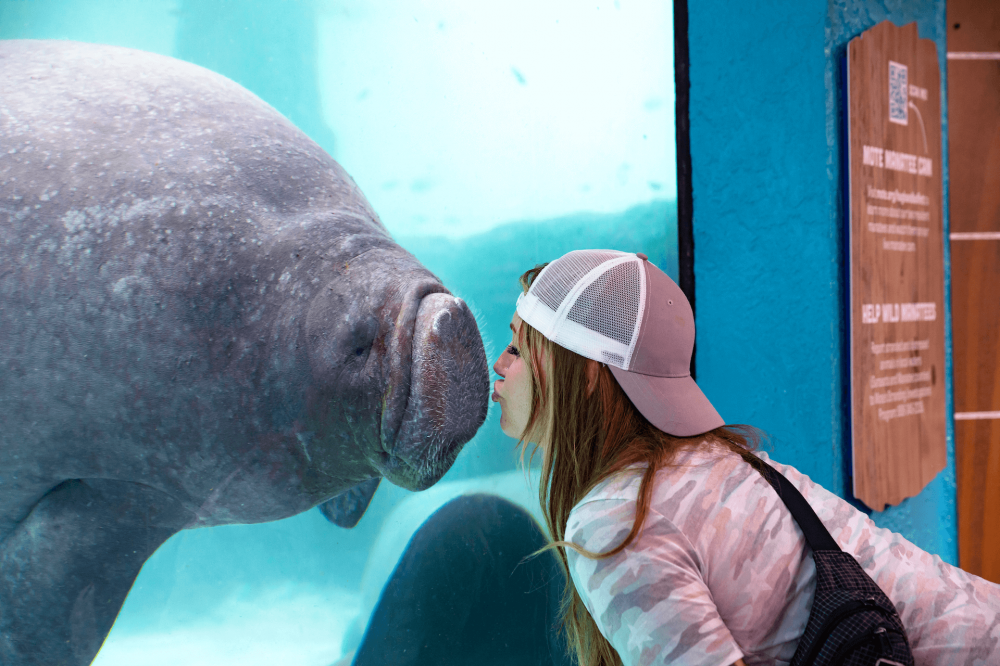
Caretaker: Indeed, manatees play a pivotal role in maintaining healthy aquatic ecosystems. Areas with many manatees, like some regions of Crystal River, benefit from manatee grazing, which helps control the growth of sea grass beds and ensures the health of marine habitats. By consuming vast amounts of vegetation, they help maintain the balance and health of their ecosystems, which is beneficial for countless marine species.
Charlie: That’s a profound impact. Before we wrap up, any final fascinating facts about manatees you’d like to share?
Caretaker: One remarkable aspect of manatees is their peaceful and solitary nature. Despite their size, they are incredibly gentle creatures. Their presence in Florida waters and beyond highlights the importance of preserving marine habitats for future generations. Protecting these gentle giants helps ensure the health and diversity of marine life around the globe.
Charlie: Thank you for sharing such insightful information about the Florida manatee. It’s clear they are not just gentle giants but key players in their ecosystems. We appreciate your time and the work you do at Mote Marine.
Caretaker: It was my pleasure, Charlie. Thank you for spreading the word about these magnificent creatures and the importance of marine conservation.
Charlie is Editor-in-Chief of Sea Magazine
